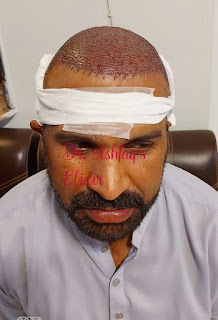The donor zone is a critical concept in hair restoration surgery, particularly in the context of procedures like follicular unit transplantation (FUT) and follicular unit extraction (FUE). The donor zone refers to the area on the scalp from which hair follicles are harvested for transplantation to areas experiencing hair loss.
Here are some key points regarding the donor zone and its significance in hair restoration:
Permanent Hair:
The hair in the donor zone is considered permanent, meaning it is less susceptible to the effects of genetic pattern baldness. Hair follicles in this area are genetically programmed to grow throughout an individual's lifetime.
Selection of Grafts:
Surgeons carefully select hair follicles from the donor zone to ensure successful transplantation. These follicles are usually resistant to the hormone dihydrotestosterone (DHT), which is a primary factor in male and female pattern baldness.
FUT vs. FUE:
In FUT, a strip of tissue containing hair follicles is surgically removed from the donor zone, and individual follicular units are then dissected for transplantation. This method leaves a linear scar.
In FUE hair restoration in Islamabad, individual follicular units are extracted directly from the donor zone using tiny punches, resulting in small, dot-like scars scattered across the donor area.
Healing and Scarring:
The healing process in the donor zone is crucial. In FUT, the linear scar may be hidden by surrounding hair, but it's essential to ensure minimal scarring. In FUE, the scattered dot-like scars are generally less noticeable but still need to be managed carefully to avoid over-harvesting.
Donor Area Management:
Surgeons need to assess the donor area's health and characteristics before surgery. Factors such as hair density, laxity, and overall scalp condition play a role in determining how many grafts can be safely harvested.
Donor Dominance:
The concept of donor dominance is crucial in FUE hair restoration in Peshawar. Even when transplanted to a different area, hair follicles from the donor zone retain their genetic resistance to hair loss, allowing them to continue growing in their new location.
Limitations: The finite supply of donor hair is a limitation in hair restoration surgery. Surgeons must balance the desire for a fuller head of hair with the available donor resources to avoid over-harvesting and depleting the donor area.
Art and Science:
Hair restoration is both an art and a science. Surgeons need to consider not only the technical aspects of harvesting and transplantation but also the aesthetic principles to achieve natural-looking results.
In summary, the donor zone is a critical aspect of hair restoration surgery. Careful planning, precise extraction methods, and consideration of the patient's unique characteristics are essential to maximize the success of the procedure and create natural-looking results.

No comments:
Post a Comment